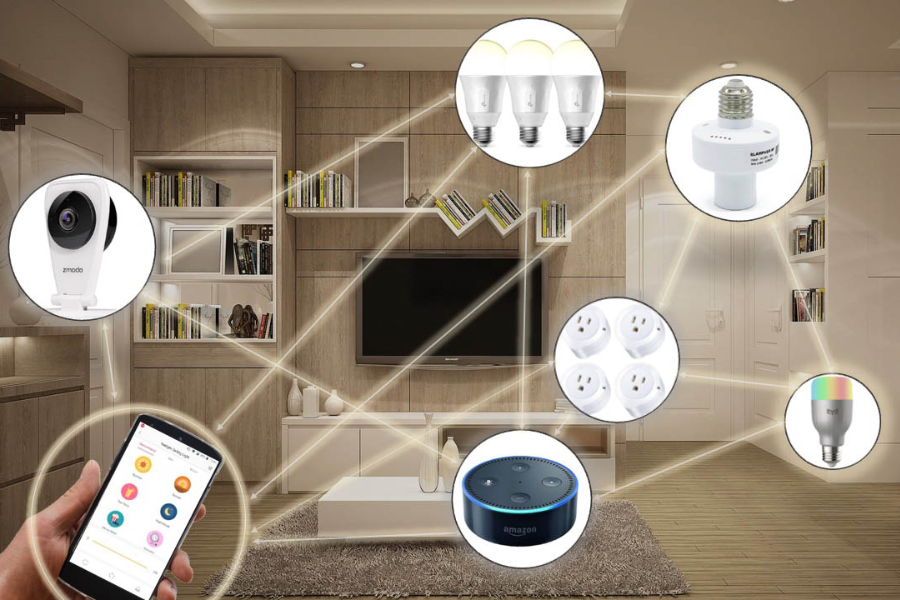The Techno Tricks Guide to Building a Smart Home on a Budget
Creating a smart home no longer requires a huge investment or tech expertise. What once seemed like a futuristic dream is now more accessible than ever. Today, even with a modest budget, anyone can enjoy the convenience, control, and efficiency of smart home technology.
The Techno Tricks presents a practical and affordable guide to building a smart home without overspending. Whether you’re a first-time homeowner, a renter, or someone looking to upgrade step by step, this guide will walk you through everything you need to know.
What Is a Smart Home
A smart home is a living space equipped with internet-connected devices that allow remote or automated control of systems like lighting, security, climate, and entertainment. These devices communicate through Wi-Fi, Bluetooth, Zigbee, or other smart protocols.The core idea is simple—replace traditional systems with smart versions that make daily life more efficient and responsive.
Why Go Smart on a Budget
The purpose of a budget-friendly smart home is to balance functionality with affordability. Many people mistakenly believe that smart home upgrades are only for tech enthusiasts or wealthy homeowners. In reality, a few inexpensive devices can transform how you interact with your home.
Some key benefits include:
- Energy savings through automation
- Increased security and remote monitoring
- Hands-free voice control
- Convenience in everyday tasks
- Better accessibility for elderly or disabled individuals
With the right approach, a fully functional smart home can be built one device at a time without straining your wallet.
Start With the Foundation: Smart Speakers and Hubs
Every smart home needs a brain. This can be a dedicated hub or a smart speaker that doubles as a control center. Fortunately, these entry points are often very affordable.
Top Budget Options:
- Amazon Echo Dot
- Google Nest Mini
These devices allow voice control, scene automation, and integration with other smart products. They connect to your home Wi-Fi and allow you to manage everything through your voice or a smartphone app.
If your home has more complex needs, consider smart hubs like:
- Samsung SmartThings Hub
- Hubitat Elevation
These offer broader device compatibility and better local automation features.
Lighting: The Easiest Smart Upgrade
Smart lighting is often the first step people take when entering the smart home world. It’s affordable, easy to install, and makes a noticeable impact.
Budget-Friendly Options:
- Wyze Bulb
- Sengled Smart Bulbs
- TP-Link Kasa Smart Bulbs
Most budget smart bulbs can be set on schedules, adjusted in brightness, or even change colors. You can also add smart light switches if you prefer to control traditional fixtures or want a more permanent solution.Timers, motion sensors, and group controls help save electricity while adding a layer of convenience.
Smart Plugs: Low-Cost Automation for Any Device
Smart plugs turn any regular appliance into a smart one. Just plug your fan, lamp, coffee maker, or TV into a smart plug and control it through your phone or smart speaker.
Popular and Reliable Models:
- TP-Link Kasa Smart Plug
- Amazon Smart Plug
- Meross Wi-Fi Plug
These are ideal for automating daily routines. For example, you can program your coffee maker to start brewing when your morning alarm goes off.
Home Security on a Budget
Safety doesn’t have to come with a heavy price tag. Basic security components like cameras and sensors are now cheaper and smarter than ever.
Recommended Budget Devices:
- Wyze Cam v3
- Blink Mini Camera
- Ring Video Doorbell Wired
- Eufy Entry Sensor Kits
You can get indoor and outdoor cameras with two-way audio, motion detection, and cloud or local storage. Combine door sensors and motion detectors for complete coverage.
Additionally, many of these work directly with Alexa or Google Home, so you can get voice alerts or app notifications instantly.
Climate Control That Pays for Itself
Smart thermostats help reduce heating and cooling costs. They learn your routines and adjust temperatures accordingly. Some can also detect when you’re away and turn off systems to save energy.
Best Affordable Options:
- Amazon Smart Thermostat
- Wyze Thermostat
- Nest Thermostat (not the Learning version)
While they may require basic wiring knowledge, these thermostats are worth the investment. Many energy companies even offer rebates for installing one.
Entertainment: Smarter Streaming for Less
Transform your home entertainment without upgrading your entire TV system. Smart streaming sticks and speakers allow for easier media control and more immersive experiences.
Budget Entertainment Picks:
- Amazon Fire TV Stick
- Google Chromecast with Google TV
- Roku Express
These devices support voice search, app control, and even smart display integration. Some smart speakers can double as surround sound systems if you’re willing to expand later.
Smart Sensors and Automation Triggers
Sensors are the unsung heroes of automation. Motion sensors, door sensors, and environmental monitors can trigger routines, security actions, or energy-saving functions.
Useful Sensor Ideas:
- Motion sensors turn on lights when you enter a room
- Water leak sensors detect leaks early and prevent damage
- Temperature sensors work with smart thermostats
- Contact sensors alert you when windows or doors open
These simple add-ons help make your smart home intelligent and proactive rather than reactive.
How to Plan Your Smart Home on a Budget
Building a smart home on a budget means knowing where to start and what to prioritize. Here’s how to approach it step-by-step.
- Start with a Goal: What do you want to automate? Lights, security, media, climate
- Choose a Platform: Alexa, Google Assistant, Apple HomeKit, or SmartThings
- Set a Monthly Budget: Start small and expand over time
- Go Room by Room: Automate one area fully before moving to the next
- Avoid Device Overload: Focus on quality and compatibility instead of quantity
Planning prevents waste and helps build a more seamless smart experience.
Common Budget-Friendly Smart Home Mistakes to Avoid
- Mixing incompatible brands or platforms
- Buying more than needed before testing
- Ignoring firmware updates and security
- Overcomplicating simple tasks
- Not labeling or organizing smart devices in the app
A smart home should simplify life, not make it more confusing. Take time to learn the system and integrate devices thoughtfully.
The Techno Tricks Conclusion
Smart homes are no longer a luxury. With smart planning, affordable devices, and the right platform, anyone can enjoy a connected, convenient lifestyle without spending a fortune. The Techno Tricks recommends starting with basic tools like smart bulbs, plugs, and cameras. Over time, you can build a complete system that reflects your personal needs and habits.In 2025, building a smart home on a budget is not only possible—it’s practical, accessible, and incredibly rewarding.






